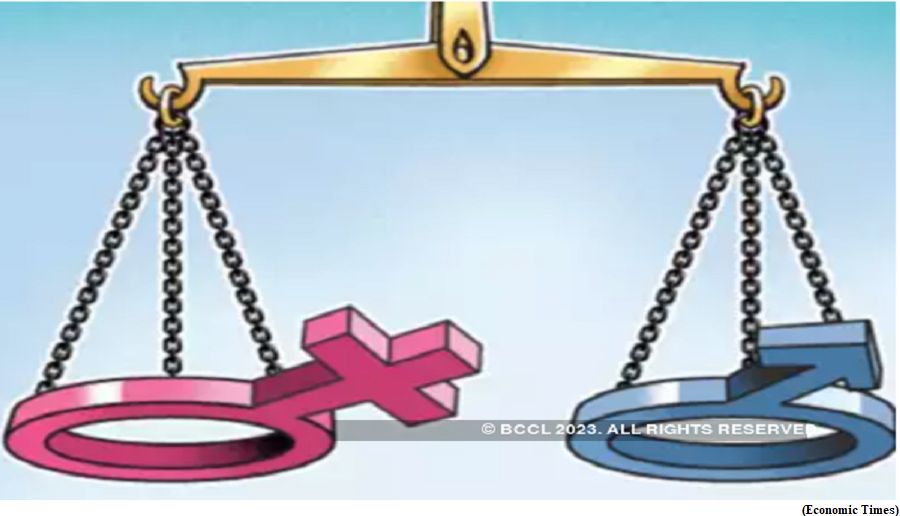Scientists from Gujarat institute develop biodegradable paper supercapacitor from seaweed (GS Paper 3, Science and Technology)

Why in news?
- Scientists at Gujarat Energy Research and Management Institute (GERMI) have developed the thinnest, lightweight and biodegradable paper-based supercapacitor.
- This supercapacitor which can fully charge a device within 10 seconds, has been developed from seaweed (marine macroalgae).
What is supercapacitor?
- A supercapacitor is an electrochemical charge storage device with a fast charging/discharging cycle, high power density and a longer lifecycle.
Key Highlights:
- Scientists extracted cellulose nanofibers from seaweed and reduced them into graphene oxide and zinc oxide. Nanowires were grown over the extracted seaweed cellulose nanofibers using hydrothermal methods to get the anodic paper supercapacitor.
- The marine cellulose-based material used in developing the flexible and thinnest paper supercapacitor can be used in almost all smart electronic devices.
- It can also be a source of revenue for coastal communities that cultivate seaweed, an essential commodity for manufacturing the paper supercapacitor.
What are seaweeds?
- Seaweeds are macroalgae attached to rock or other substrata and are found in coastal areas.
- They are classified as chlorophyta (green), rhodophyta (red) and phaeophyta (brown) on the basis of their pigmentation.
- Among them, chlorophyta holds more potential components; carbohydrates, lipids, proteins and bioactive compounds in the cell wall. Green seaweed has a high amount of a particular type of cellulose in its cell wall.
Raw material:
- Cellulose is found to be as most suitable biopolymer material for manufacturing paper-based electrode materials such as paper supercapacitors or batteries for energy storage applications.
- Cellulose itself is an insulating material that requires to be coated with conductive material to make a paper-based energy storage device.
- Green seaweeds were collected from the Porbandar coast of Gujarat.
- The developed seaweed-based electrode is used in an asymmetrical supercapacitor by sandwiching a sodium chloride electrolyte-soaked paper separator between two seaweed cellulose nanocomposites and activated charcoal powder slurry.
Applications:
- The device is of high tensile strength and performance, as well as cost-effective.
- The product can be used in electronics, memory backup systems, airbags, heavy machines, electric vehicles, etc.; hence, it holds a huge business prospect.
India climbs eight places to 127 in global gender index, says WEF report
(GS Paper 1, Social Issues)
Why in news?
- India has ranked at 127 out of 146 countries in terms of gender parity, according to the World Economic Forum's annual Gender Gap Report, 2023.
- The World Economic Forum (WEF) ranked India at 135 out of 146 countries in the Global Gender Gap Index in the report's 2022 edition.

Details:
- India has improved by 1.4 percentage points and eight positions since the last edition, marking a partial recovery towards its 2020 parity level.
- India has attained parity in enrolment across all levels of education.
- India has closed 64.3 per cent of the overall gender gap. However, it underlined that India has reached only 36.7 per cent parity on economic participation and opportunity.
Global rankings:
- The index ranked India's neighbours Pakistan at 142, Bangladesh at 59, China at 107, Nepal at 116, Sri Lanka at 115 and Bhutan at 103.
- Iceland is the most gender-equal country in the world for the 14th consecutive year and the only one to have closed more than 90 per cent of its gender gap.
Highlights related to India:
- In India, while there has been uptick in parity in wages and income, the share of women in senior positions and technical roles have dropped slightly since the last edition.
Political empowerment:
- On political empowerment, India has registered 25.3 per cent parity, with women representing 15.1 per cent of parliamentarians, the highest for the country since the inaugural report in 2006.
- Out of the 117 countries with available data since 2017, 18 countries including Bolivia (50.4 per cent), India (44.4 per cent) and France (42.3 per cent) have achieved women's representation of over 40 per cent in local governance.
Sex ratio:
- For India, the 1.9 percentage point improvement in sex ratio at birth has driven up parity after more than a decade of slow progress, the report said.
- However, it also said that for Vietnam, Azerbaijan, India and China, the relatively low overall rankings on the Health and Survival sub-index is explained by skewed sex ratios at birth.
South Asia:
- Overall, the Southern Asian region has achieved 63.4 per cent gender parity, the second-lowest of the eight regions.
- The score in South Asia has risen by 1.1 percentage points since the last edition on the basis of the constant sample of countries covered since 2006. The improvement is partially attributable to the rise in scores of populous countries such as India, Pakistan and Bangladesh.
Overall Gender Gap:
- Overall, the report said gender parity globally has recovered to pre-Covid levels but the pace of change has stagnated as converging crises slow progress. While no country has yet achieved full gender parity, the top nine countries have closed at least 80 per cent of their gap.
- The report found that the overall gender gap has closed by 0.3 percentage point from 2022.
- The overall progress in 2023 is partly due to the improvement in closing the educational attainment gap, with 117 out of the 146 indexed countries now having closed at least 95 per cent of the gap.
About Global Gender Gap Report:
- The Global Gender Gap Report, now in its 17th edition, benchmarks the evolution of gender-based gaps in four areas:
- economic participation and opportunity;
- educational attainment;
- health and survival; and
- political empowerment.
- It is the longest-standing index which tracks progress on closing these gaps since its inception in 2006. It also explores the impact of recent global shocks on the gender gap crisis in the labour market.
What is the New Collective Quantified Goal?
(GS Paper 3, Environment)
Why in news?
- The recently-concluded Bonn climate conference in Germany, expected to outline the political agenda for the crucial end-of-year Conference of Parties-28 (COP28) in Dubai, was critical for reviewing and reforming the climate finance architecture.
- The conference has exposed a gaping hole in the funding needed to pay for climate action.

What is the NCQG?
- A commitment of ‘$100 billion per year till 2020’ to developing nations from developed countries was a target set at the Conference of Parties (COP) in 2009. But estimates since then show addressing climate change may cost billions, and even, trillions of dollars.
- Therefore, the 2015 Paris Climate Agreement agreed on setting a New Collective Quantified Goal (NCGQ) for climate financing prior to 2025, a reference point which accounts for the needs and priorities of developing nations. The NCGQ is thus, termed the “most important climate goal”.
- It pulls up the ceiling on commitment from developed countries, is supposed to anchor the evolving needs and priorities of developing countries based on scientific evidence and should respond to the ever-increasing sums of funding necessary for Loss and Damage in response to failed and/or delayed financial support.
Why do we need a new finance goal?
- Out of the promised $100 billion per year, developed countries provided $83.3 billion in 2020, as per a report by the Organisation for Economic Co-operation and Development.
- These figures may be misleading and inflated by as much as 225%, an Oxfam analysis found, as “there is too much dishonest and shady reporting”.
- Moreover, the $100 billion target set in 2009 was seen more as a political goal, since there was no effort to clarify the definition or source of ‘climate finance’.
- The economic growth of developed countries has come at the cost of high carbon emissions, and thus they are obligated to shoulder greater responsibility. While funds available for climate finance have quantitatively increased, they are inaccessible, privately sourced, delayed and not reaching countries in need.
What is at stake in 2023?
- Countries are on a tight deadline to agree upon the NCQG ahead of 2024. A global transition to a low-carbon economy requires investments of at least $4 trillion to $6 trillion a year, as per last year’s Sharm el-Sheikh Implementation Plan.
- It is argued that instead of identifying a single aggregate figure, the NCQG could also set separate targets (or sub-goals) for focus areas such as mitigation, adaptation and loss and damage.
- The aim is to focus on scaling up concessional financing, stopping debt creation and allowing NCQG to be more of a “process” rather than a goal towards equitable and people-led transition.




